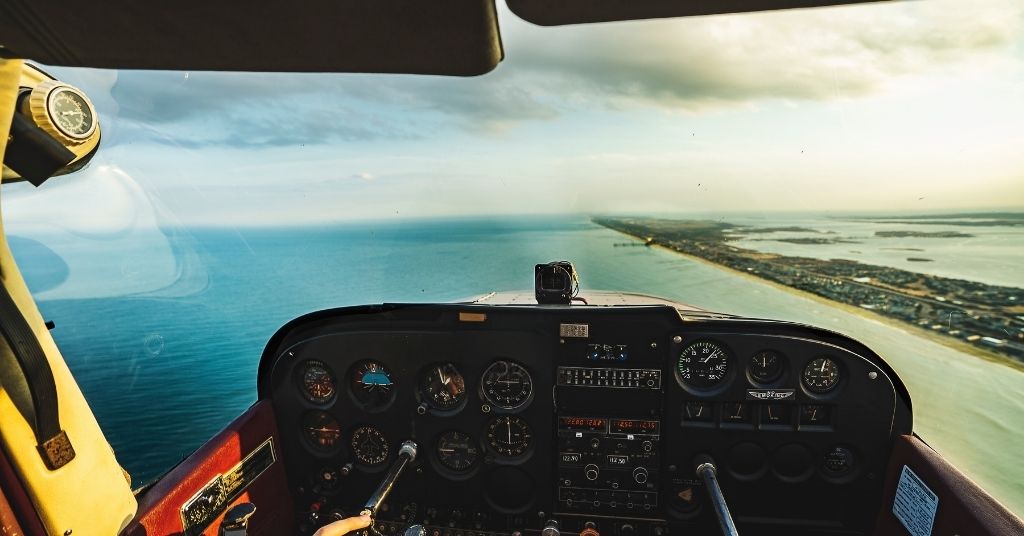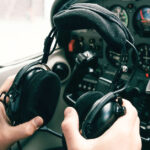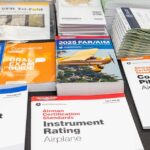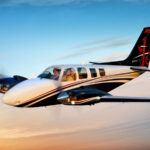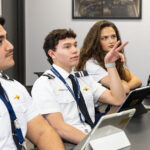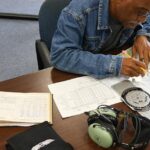In aviation, every detail matters. Safety isn’t just about checklists and clear skies — it starts long before you taxi to the runway. One of the most overlooked yet essential habits every pilot should develop is keeping their aircraft clean, organized, and properly stocked before each flight.
It may seem minor, but your preflight environment directly impacts safety and efficiency. Clear windows enhance visibility. An organized cockpit reduces distractions. And having essentials on board—like a “blue bag” for unexpected situations — prepares you for anything the skies may bring.
Whether you’re a student pilot or a seasoned aviator, keeping your aircraft in top shape before takeoff is more than just good practice—it’s a mark of professionalism.
Let’s break down why this matters and what to always check before wheels up.
Visibility Matters: Don’t Fly with Dirty Windows
One of the most immediate safety concerns in aviation is reduced visibility. Flying with smudged, dirty, or bug-splattered windows isn’t just inconvenient — it’s dangerous. Poor visibility affects depth perception, makes it harder to spot other aircraft, and can interfere with visual navigation, especially during takeoff and landing when situational awareness is critical.
Before every flight, take a few minutes to clean your windshield and side windows. Use aviation-approved cleaning products to prevent damage and ensure a clear, streak-free finish. If your aircraft has been parked outside, pay special attention to pollen, dust, and bug splatter that might have accumulated overnight.
Clean windows not only show professionalism but also give you a clear view of your surroundings, helping you fly safely and confidently.
Declutter Your Cockpit: An Organized Space Equals a Focused Mind
An organized cockpit is a safe cockpit. Clutter on the floor or in passenger areas can shift during flight, potentially blocking controls, jamming under pedals, or creating dangerous distractions at critical moments. Stray items can also interfere with emergencies if they arise.
Before takeoff, take a moment to organize:
- Secure all loose items.
- Keep charts, checklists, and tools within easy reach.
- Confirm that emergency equipment is stowed properly and accessible.
- Double-check that nothing is obstructing control surfaces or levers.
Pilots who develop this habit not only increase cockpit safety but also cultivate a disciplined mindset that carries over into other aspects of flight operations.
Stocking for Success: Are You Prepared for Anything?
A prepared pilot is a safe pilot. Being ready goes beyond having your logbook and checklist—it means carrying the right supplies for both routine flights and unexpected situations.
Your preflight checklist should include:
- Flashlight with Red Lens: Even during daytime flights, delays or unexpected low-light conditions can occur. A red lens preserves your night vision, unlike a white light, which can hinder your eyes’ ability to adapt in the dark.
- Backup Navigation Tools: In the age of glass cockpits and electronic flight bags, having paper charts and a compass as backups is smart planning.
- Weather Gear: A light jacket, sunglasses, and sunscreen help you stay comfortable and protected, especially in changing conditions.
- Personal Essentials: A small, designated bag for personal needs (e.g., motion sickness ‘the blue bag’ supplies, snacks, water, portable charger, basic first aid kit).
- Emergency Kit: Make sure your onboard kit is up to date with flares, signaling devices, and survival gear suited to your flight environment.
Having these essentials ready ensures you’re prepared not just for normal operations but for the “what-ifs” that come with every flight.
Preflight Walkaround: Look Beyond the Obvious
Your exterior preflight inspection is about more than just checking the basics. It’s a chance to inspect your aircraft for cleanliness or maintenance issues that could impact safety. Dirt, grime, or debris buildup can hide minor but critical problems like fluid leaks, cracks, or corrosion.
During your walkaround, take the time to:
- Wipe down control surfaces and hinges.
- Ensure lights and lenses are clean for maximum visibility.
- Check that pitot tubes and static ports are clean and unobstructed.
A clean aircraft doesn’t just look better — it reflects a higher standard of care and operational readiness.
Set the Tone for Every Flight
When you take the time to keep your aircraft clean, organized, and well-stocked, you’re doing more than just housekeeping. You’re setting the tone for every flight. These simple habits create a culture of professionalism, discipline, and readiness that extends far beyond the cockpit.
For instructors, this is especially important. Demonstrating thorough preflight preparation teaches students the importance of discipline and attention to detail. Students who learn to respect their aircraft environment early on are more likely to carry those habits into their careers, making them safer and more effective pilots.
Confidence Comes from Preparation
There’s a quiet confidence that comes from knowing you’re prepared for anything. Clean windows provide clear visibility. An organized cockpit keeps your focus sharp. A well-stocked supply kit ensures you’re ready for surprises. When you cover all these bases, you reduce stress, improve decision-making, and foster a safer flying environment.
At American Flyers, we emphasize not only technical skill but the everyday practices that elevate a good pilot to a great one. Cleanliness, organization, and preparation are part of that foundation. After all, flying doesn’t start when you apply throttle—it starts the moment you approach your aircraft.
So before your next takeoff, ask yourself: Is your aircraft clean, stocked, and organized? If the answer is yes, you’re already on the runway to success.




